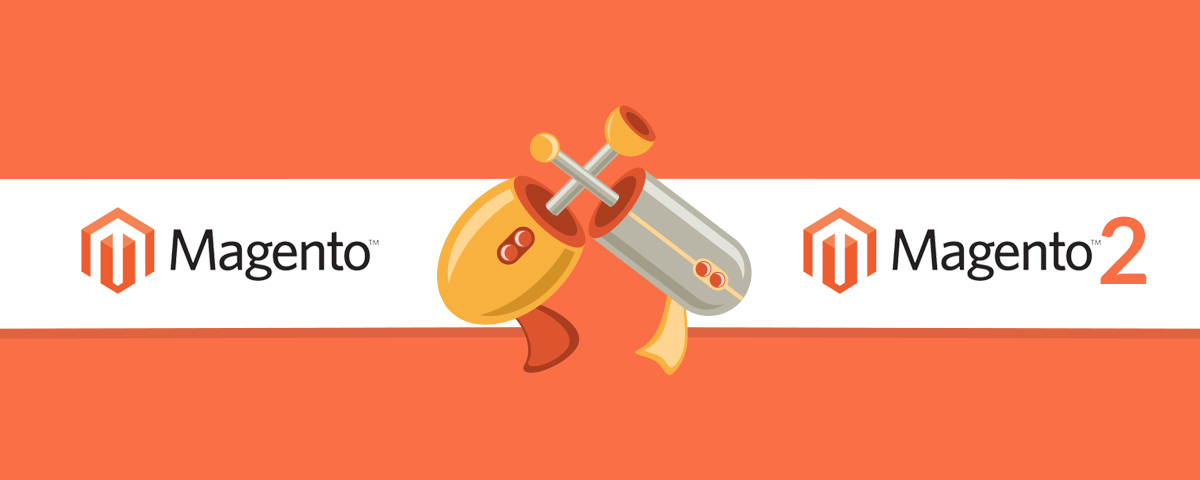
What are the Differences Between Magento 1 and Magento 2?
By David Ephraim, ATAK Interactive President, Development + Operations
Magento is a great eCommerce platform for SMBs, and with Magento 2 the software is now even better. Magento 2 has a huge array of new features, and its performance upgrades are a big deal. If your business can sustain $2 million or more a year in sales and can dedicate the right team to its success, Magento 2 could be the perfect eCommerce platform choice.
If you currently have Magento 1, the time to think seriously about upgrading is now. After June 2020, the earlier version won’t be supported anymore (although Magento has extended this deadline more than once). There will be no bug fixes or security patches at that point, so one shouldn’t wait until the last minute if he or she wants a smooth migration.
As of this writing, Magento is at Version 2.3.2. Be sure you have the latest version to get all the benefits described here. The Open Source (free) edition of Magento may not have all of these features.
Benefits of Magento 2
Describing all the benefits of Magento 2 would take a small book. Here are a few of the important ones.
- Fast loading. Pages load up to 50% faster than Magento 1.
- Mobile-friendly. Mobile access accounts for over half of eCommerce today. Magento 2 pages are responsive by default, making them easy to use from a smartphone and improving search engine rank.
- Streamlined checkout. The Magento 2 checkout experience is completely updated. Magento 2 now offers a two-step checkout process, compared with the six-step default checkout process in Magento 1. Customers can also now use PayPal in context; they don’t have to leave your site to pay.
- Page Builder. New in Magento Commerce 2.3, the Page Builder lets you create and edit pages using drag and drop. No coding knowledge is necessary (or less anyways). Embedding third-party content such as maps and videos is easy.
- More out-of-the-box integrations. Available integrations now include PayPal, Braintree, and Avalara. No third-party extensions are necessary for these commonly used tools.
- Multi-source inventory. Before Version 2.3, Magento supported only a single stock source for inventory. Now a site can use multiple sources, with a selection algorithm to determine the appropriate source for any given case.
- Multiple master databases. A Magento site can now divide its information through more than one database, e.g., one for transactions and one for products.
- Full-page caching. This feature is now available in all Magento 2 editions, and it’s greatly improved.
- Better security. Magento 2 is based on PHP 7.2, which contains numerous security improvements over previous versions of the language. It eliminates vulnerabilities found in earlier Magento versions.
The product website describes the new features of Magento 2 in detail.
Marketing tools
A successful eCommerce site doesn’t just process sales. The framework lets you offer incentives and get useful information about sales and customers. Magento 2 offers a greatly enhanced set of marketing tools for its updated administration area.
- Fine control of promotional pricing. You can create complex rules for selective pricing. Prices can apply to a particular website, category, customer group, and date range. You can create and prioritize multiple rules.
- Flexible coupons. Coupon codes are even more flexible, with the options already mentioned as well as optional limits on the number of uses per coupon and per customer. Tools facilitate tracking of coupons.
- Flexible shipping rates. Magento 2 lets you offer flat-rate or table-rate shipping. Table rates can take weight, destination, and volume into account. Coupons can offer shipping discounts.
- Multi-tier pricing. The Advanced Pricing option lets you set special prices for customer groups and quantity purchases. You can give visitors who are logged at a better price than those who aren’t.
- Customer attributes. You can define your own customer’s attributes to collect whatever kind of information is useful.
- Cart and Wishlist reminders. A flexible reminder system allows automatically sending customers a reminder of an abandoned cart or wishlist. Triggers can be based on the number of days, the number of items, total value, and other criteria.
- Customer loyalty tools. Reward points, private sales, and store credits are some of the features of Magento Enterprise which keep customers interested and let them feel special.
B2B features
Companies that revolve around B2B commerce will find lots of valuable features in Magento 2. Other businesses can be the most demanding customers. They don’t care about frills, but they want information, availability, the best price, and prompt delivery. A good set of tools will help to keep them satisfied.
- Custom catalogs. Catalogs can have per-customer filters and product references, so buyers see just the kinds of products that interest them. Price lists can be set per customer.
- Multi-contact accounts. A business client account can include multiple users, each with different privileges. The administrator can create new users, purchasing accounts can buy items, and other accounts can just review data.
- Quick Orders. The Quick Order feature lets business customers repeat previous orders, search by SKU, or upload a CSV file with SKUs. They can then review the search results and make their selection. They can create and modify requisition lists or frequently purchased product lists.
- Quote requests. Sometimes it helps to let the customer request a quote. Magento 2 supports this process and lets the seller respond with a quote that can have a time limit and other automatically enforced conditions.
- Payment on the account. Magento 2 lets trusted customers run up a credit account. The administrator can authorize it per customer and assign each one a credit limit.
Is it necessary to upgrade?
Upgrading Magento will soon be a necessity. After June 2020, Magento 1 will no longer be supported. That doesn’t just mean there won’t be new releases. It means that bugs won’t be fixed by Magento, the company, and security patches won’t be issued either. Vulnerabilities that become public will be targets for malware. Therefore, running the old version of Magento after that will be a risky proposition, especially for high volume sites, with the potential for serious monetary losses.
The migration process isn’t trivial. You’ll need to update your theme and the extensions you will still need to compatible versions. Integrations will need revision. Think of an upgrade from Magento 1 to Magento 2 as more of a migration to a new software than a mere version upgrade. The benefits are huge, but you need to allow enough time to get the configurations you need done right. And remember, after May 2020, your business will have to upgrade under more panic-like conditions.
Is Magento 2 right for your business? We’re Magento experts, but we’re also well versed in the alternatives. Talk to us to help decide what the best course is for your eCommerce operations.
Related Posts

How UI/UX Design Trends Are Shaping the Future of User Experience
User Experience (UX) and User Interface (UI) design are critical components of creating digital products that users enjoy using. Over the years, these…

How can a UI/UX Agency Impact My Business and Improve Our Customer Behavior?
In today's world, a strong online presence is crucial for the success of any business. One of the key factors that can make or break your online presence…

Why Your Company Needs To Outsource Web Development Services?
Web development services are an essential part of creating and managing websites. Outsourcing web development services can provide businesses with cost…